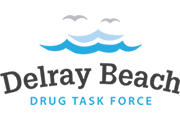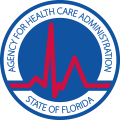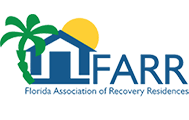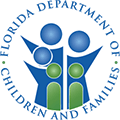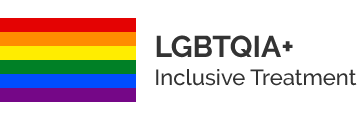The abuse of prescription drugs is a problem that continues to increase in intensity throughout society. While prescription medications provide relief from legitimate ailments for countless individuals, there are some people who fall into destructive patterns of abuse with these substances due to the mind-altering and mood-altering effects that they provide.
Understanding Prescription Drug Addiction
Learn about prescription drug addiction and abuse
Some of the most commonly abused prescription medications include the following:
- Stimulants (e.g., Ritalin, Adderall, etc.)
- Pain medications (e.g., Vicodin, morphine, OxyContin, etc.)
- Antianxiety medications (e.g., Klonopin, Valium, Xanax, etc.)
- Sedatives (e.g., Ambien)
When these medications are taken in greater dosages than are prescribed, more frequently than is recommended by one’s doctor, or for recreational purposes without supervision of a physician, they can bring about pleasurable feelings that individuals begin to crave. The specific effects that occur will be dependent upon the particular medication being consumed. For example, stimulants can enhance focus and increase one’s energy, while also serving to help individuals lose weight. Antianxiety medications, pain medications, and sedatives can bring about feelings of euphoria, relaxation, contentment, and a sense of detachment from one’s surroundings. The appeal of these effects can be intriguing to many, causing the cycle of prescription drug abuse and addiction to perpetuate. Fortunately, by taking part in appropriate treatment interventions, this detrimental addiction can be successfully overcome.
Statistics
Prescription Drug Abuse Statistics
Ongoing research has demonstrated that the number of people who abuse prescription medications continues to rise. Specific studies have concluded that approximately 52 million people in the United States alone have abused some form of prescription medication for non-medical purposes. Furthermore, additional research has indicated that prescription drug overdoses are responsible for more deaths than car accidents, gunshot wounds, and suicides.
Causes & Risks
Causes and Risk Factors for Prescription Drug Abuse
The causes and risk factors involved in the development of a prescription drug abuse problem involve various components, of which are described briefly in the following:
Genetic: Research has provided evidence that there exists a strong genetic link to the onset of addiction, including the development of an addiction to prescription drugs. Individuals with family members who struggle with abusing prescription medications are at a greater risk for taking part in the same type of behavior than are those who do not possess similar genetic backgrounds.
Environmental: The environment in which an individual is surrounded can impact his or her vulnerability to abusing prescription medications. For example, individuals who are surrounded by substance abuse are more likely to experiment with abusing substances themselves, including prescription drugs, than are individuals who do not have such exposure. Additionally, individuals who are able to obtain prescription drugs without much hassle are more likely to begin abusing them as well. Furthermore, those who suffer from conditions that require them to take prescription medications are more susceptible to engaging in patterns of abuse as they have ongoing availability to the drug.
Risk Factors:
- Family history of mental illness
- Family history of substance abuse and addiction
- Personal history of other substance abuse
- Personal history of mental illness
- Suffering from pain conditions, for which prescription medications are prescribed and taken
- Ease of access with which one can obtain prescription drugs
- Exposure to substance abuse at an early age
- Ongoing exposure to stressful situations or other types of conflict
Signs & Symptoms
Signs and Symptoms of Prescription Drug Abuse
When individuals are abusing prescription drugs, the signs and symptoms that they may exhibit will vary depending upon the specific type of medication that they are consuming. However, some common examples of behavioral, physical, cognitive, and psychosocial symptoms that may arise that could indicate that someone is struggling with a prescription drug abuse problem include:
Behavioral symptoms:
- Withdrawal from friends and family
- Lying
- Stealing or borrowing money
- Going to multiple doctors to obtain multiple prescriptions
- Altered ability to perform occupationally
- Frequent absences from work
- No longer participating in activities that one once found enjoyable
Physical symptoms:
- Changes in sleeping patterns
- Changes in eating habits
- Bloodshot eyes
- Tremors / shakes
- Decline in personal hygiene
- Impaired coordination
Cognitive symptoms:
- Disorientation
- Declined reasoning capabilities
- Declined ability to use decision-making skills
- Loss of sound judgment
- Altered perceptions of reality
- Confusion
- Concentration difficulties
Psychosocial symptoms:
- Mood fluctuations
- Periods of emotional detachment or emotional numbness
- Loss of interest in activities once enjoyed
- Decline in motivation
- Depression
- Anxiety
- Irritability
- Agitation
Effects
Effects of Prescription Drug Abuse
When prescription drug abuse is an ongoing factor in an individual’s life, he or she is vulnerable to experiencing a number of devastating effects. Examples of such effects may include, but are not limited to, the following:
- Decline in overall physical health
- Memory disturbances
- Cognitive impairment
- Declined ability to perform well occupationally, potentially resulting in job loss
- Chronic unemployment
- Disturbed relationships
- Familial discord
- Onset of, or worsening of, symptoms of other mental health conditions
Co-Occurring Disorders
Prescription Drug Abuse & Co-Occurring Disorders
It is not uncommon for individuals who are battling an addiction to prescription drugs to be simultaneously battling symptoms of another mental health condition. Examples of such conditions include:
- Bipolar disorder
- Anxiety disorders
- Depressive disorders
- Posttraumatic stress disorder
- Borderline personality disorder
- Other substance use disorders
Withdrawal
Effects of Prescription Drug Abuse Withdrawal & Overdose
Effects of prescription drug withdrawal: If an individual’s body has become accustomed to the presence of prescription medications and then suddenly is no longer receiving them, his or her system can go into a state of withdrawal. Examples of possible signs and effects of prescription drug withdrawal include:
- Hallucinations
- Confusion
- Fatigue
- Muscle weakness
- Nausea
- Restlessness
- Abdominal cramping
- Profuse sweating
- Tremors
- Feelings of depression and anxiety
- Feelings of agitation and irritability
Effects of prescription drug overdose: When individuals consume more of a substance that their bodies are capable of appropriately metabolizing, they are at risk for experiencing overdose. Overdosing on prescription drugs is a life-threatening circumstance that requires emergency medical attention in order to prevent a fatal outcome. Signs that could indicate that someone has overdosed on prescription drugs can include:
- Severe dizziness
- Severe breathing difficulties
- Dilated pupils
- Losing the ability to communicate
- Decreased heart rate
- Clammy skin
- Changes in skin tone
- Disorientation to person, time, place, and/or situation
- Seizures
- Falling into a coma








